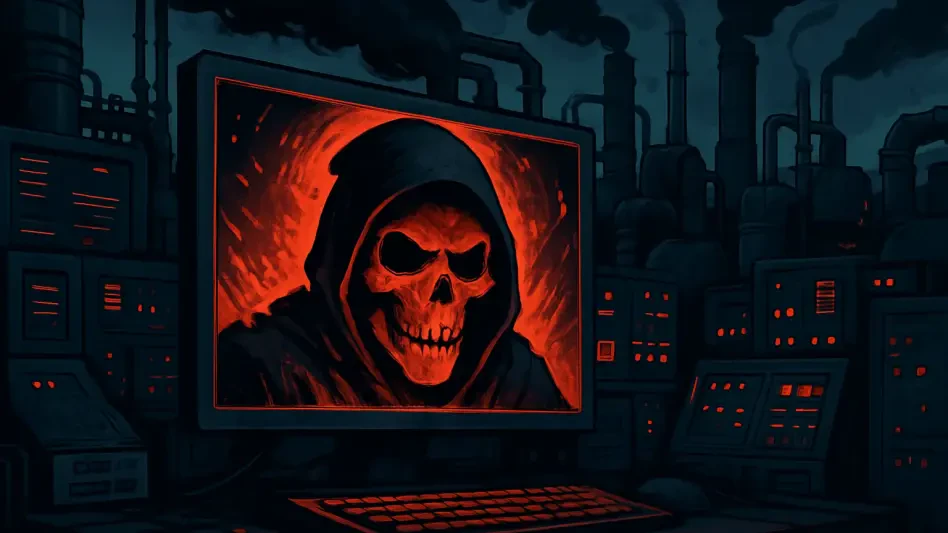What happens when the very tools relied upon to keep industrial systems running become instruments of chaos? A shocking discovery has unveiled a sinister threat lurking in the software supply chain: nine malicious NuGet packages, downloaded nearly 9,500 times, designed to sabotage critical Programmable Logic Controllers (PLCs) and safety systems. Hidden under the alias “shanhai666,” these packages blend seamless functionality with destructive intent, posing a grave risk to manufacturing and automation sectors worldwide. This revelation exposes a chilling reality about the vulnerability of industrial environments in an increasingly digitized age.
A Hidden Danger in Trusted Code
The significance of this threat cannot be overstated. Industrial Control Systems (ICS), which form the backbone of modern manufacturing, depend heavily on software dependencies like NuGet packages for operational efficiency. Yet, the open-source nature of such platforms, while fostering collaboration, also creates a breeding ground for exploitation. These malicious packages target PLCs—devices that manage everything from assembly lines to safety protocols—turning trusted tools into ticking time bombs. If undetected, the consequences could range from halted production to catastrophic safety failures, underscoring the urgent need to address software supply chain security.
The Stealthy Design of a Cyber Trap
Delving deeper, the sophistication of these malicious packages reveals a calculated approach to deception. Approximately 99% of their code functions as expected, supporting legitimate tasks like database operations and PLC communication. Buried within thousands of lines, however, are about 20 lines of destructive code, crafted to evade even the most thorough reviews. This near-perfect mimicry of trusted software lulls developers into complacency, allowing the harmful payload to infiltrate systems unnoticed.
The activation mechanisms are equally cunning, employing time-delayed and probabilistic tactics. Some packages targeting databases remain dormant until specific dates in 2027 or 2028, while others, like Sharp7Extend aimed at Siemens S7 PLCs, trigger sabotage within hours. With a 20% chance of random process termination and an 80% rate of silent write failures after 30 to 90 minutes, these attacks disguise themselves as routine errors, making diagnosis nearly impossible.
Exploiting Trust with Precision
Beyond technical trickery, the attacker employs psychological manipulation to ensure adoption. Using typosquatting, the package Sharp7Extend mimics the reputable Sharp7 library by appending “Extend” to its name, preying on developers seeking enhancements. Additionally, the perpetrator published three legitimate packages alongside the nine malicious ones under the same alias, building a facade of credibility. This strategic blend of genuine and harmful content exploits the inherent trust in open-source ecosystems, amplifying the reach of the threat.
Indicators within the code, such as the alias “shanhai666” and Chinese characters in comments, hint at a possible origin, though definitive attribution remains elusive. Experts from the research team that uncovered this plot emphasize the deliberate nature of these tactics. One researcher noted, “This isn’t just malware; it’s a weaponized betrayal of trust, designed to exploit the very systems developers rely on.” Such insights reveal the depth of planning behind this cyber campaign.
The Catastrophic Potential for Industry
The real-world implications of these packages are alarming, particularly for safety-critical environments. Silent write failures in PLC operations, which return false success signals while leaving critical settings unchanged, can undermine safety protocols without raising immediate red flags. In a manufacturing setting, this could mean actuators failing to adjust or setpoints remaining incorrect, potentially leading to equipment damage or worker endangerment.
Consider a scenario in a chemical plant where precise control is paramount. A compromised PLC failing to update safety thresholds could result in unchecked pressure buildup, with disastrous outcomes. The randomness and delayed nature of these failures further complicate mitigation, as they mimic hardware glitches or network issues, delaying the identification of a deliberate attack. This level of disruption highlights the stakes involved when software vulnerabilities intersect with physical systems.
Strategies to Shield Critical Infrastructure
Combating such invisible threats demands a proactive and layered defense. Organizations must begin by auditing all NuGet dependencies, especially those linked to suspicious aliases or exhibiting unusual time-based behaviors, and assume any system with identified packages is compromised. Automated tools can assist in scanning for hidden payloads or probabilistic execution patterns, tightening the vetting process for third-party code.
Continuous monitoring of PLC operations is also critical. Regularly verifying communication success rates and data integrity can help detect silent failures masquerading as random errors. Beyond immediate safeguards, developing robust incident response frameworks to trace long-dormant threats is essential, even when activation spans years. These steps, though resource-intensive, are vital to preserving operational integrity and safety in industrial settings.
Reflecting on a Sobering Wake-Up Call
Looking back, the unmasking of these malicious NuGet packages served as a stark reminder of the fragility within industrial software ecosystems. The intricate blend of legitimate functionality and hidden sabotage exposed how deeply trust could be weaponized against critical infrastructure. As industries grappled with the fallout, the incident underscored a pivotal lesson: vulnerabilities in code could translate into tangible, physical harm.
Moving forward, the path was clear. Strengthening dependency hygiene through rigorous publisher verification and adopting advanced forensic tools became non-negotiable priorities. Embracing continuous monitoring and fostering collaboration across sectors to share threat intelligence emerged as key strategies to outpace evolving cyber risks. This episode, though alarming, paved the way for a renewed commitment to safeguarding the unseen foundations of industrial progress.








